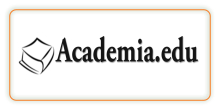TRANSGENE MANUFACTURING: FROM TOOLS TO APPLICATIONS
DOI:
https://doi.org/10.29121/granthaalayah.v12.i7.2024.5709Keywords:
Transgene Manufacturing, Genetic Engineering, Gene Therapy Vectors, Synthetic BiologyAbstract [English]
Genetic modification generation is an important intersection of genetic engineering and biotechnology and involves the integration of foreign genes into the genome of organisms to produce specific proteins or repair genetic abnormalities. The machine has many applications in medicine, agriculture and biotechnology. The evolution of genetically modified production technologies from traditional methods to advanced genetic engineering tools demonstrates their evolution. This review discusses various methods incorporating modern and advanced technologies and explores their applications and future prospects. Early models of genetic modification generally involved organisms modified to produce human insulin, followed by the evolution of animals and plants. Traditional methods such as microinjection, retrovirus-mediated gene transfer and embryonic stem cell -mediated gene transfer are important for the production of transgenic animals. Similarly, Agrobacterium-mediated transformation and biolistic transformation methods are used to produce genetically modified plants. Although useful, these methods often result in synergistic and differential gene expression. Made with genetic modification. This technology allows modification of the target with minimal impact on the target, thus increasing the predictability and efficiency of genetic modification. Additionally, CRISPR/Cas9's ability to alter multiple genes simultaneously and adaptability to various organisms expands its applications in medicine and agriculture. Synthetic biology continues to advance genetic engineering by designing and building new biological materials and systems, enabling innovations such as genetic engineering, metabolic processes, and minimal genomes. Viral vectors such as adeno-associated virus (AAV), lentivirus, and adenovirus have unique advantages and clinical challenges. Nonviral vectors, including lipid nanoparticles, electroporated, and polymeric vectors, provide alternative delivery methods with varying efficacy and specificity. Painkiller. It can improve crop growth, livestock and disease resistance in agriculture. Applications of biotechnology include biofuels, biopharmaceuticals, and bioremediation. Future directions aim to improve delivery, expand applications, explore synthetic genomics, advance personalized medicine, and develop regenerative agriculture.
In summary, with the influence of advances in genetic engineering and technology, genetically modified production has become a complex field with many applications. Its future promises transformative solutions to global challenges in health, food security and environmental sustainability. To reach its full potential, continuous innovation and ethical thinking are essential.
Downloads
References
Berg, P., & Mertz, J. E. (2010). Personal Reflections on the Origins and Emergence of Recombinant DNA Technology. Genetics, 184(1), 9-17. https://doi.org/10.1534/genetics.109.112144 DOI: https://doi.org/10.1534/genetics.109.112144
Cameron, D. E., Bashor, C. J., & Collins, J. J. (2014). A Brief History of Synthetic Biology. Nature Reviews Microbiology, 12(5), 381-390. https://doi.org/10.1038/nrmicro3239 DOI: https://doi.org/10.1038/nrmicro3239
Chan, L. Y., Kosuri, S., & Endy, D. (2005). Refactoring Bacteriophage T7. Molecular Systems Biology, 1(1), 0018. https://doi.org/10.1038/msb4100025 DOI: https://doi.org/10.1038/msb4100025
Cong, L., Ran, F. A., Cox, D., Lin, S., Barretto, R., Habib, N., & Zhang, F. (2013). Multiplex Genome Engineering Using CRISPR/Cas Systems. Science, 339(6121), 819-823. https://doi.org/10.1126/science.1231143 DOI: https://doi.org/10.1126/science.1231143
Elowitz, M. B., & Leibler, S. (2000). A Synthetic Oscillatory Network of Transcriptional Regulators. Nature, 403(6767), 335-338. https://doi.org/10.1038/35002125 DOI: https://doi.org/10.1038/35002125
Evans, M. J., & Kaufman, M. H. (1981). Establishment in Culture of Pluripotential Cells from Mouse Embryos. Nature, 292(5819), 154-156. https://doi.org/10.1038/292154a0 DOI: https://doi.org/10.1038/292154a0
Fischer, R., Schillberg, S., Hellwig, S., Twyman, R. M., & Drossard, J. (2012). GMP Issues for Recombinant Plant-Derived Pharmaceutical Proteins. Biotechnology Advances, 30(2), 434-439. https://doi.org/10.1016/j.biotechadv.2011.08.007 DOI: https://doi.org/10.1016/j.biotechadv.2011.08.007
Ginn, S. L., Amaya, A. K., Alexander, I. E., Edelstein, M., & Abedi, M. R. (2018). Gene Therapy Clinical Trials Worldwide to 2017: An Update. The Journal of Gene Medicine, 20(5). https://doi.org/10.1002/jgm.3015 DOI: https://doi.org/10.1002/jgm.3015
Glick, B. R. (2010). Using Bacteria to Help Feed the World. Critical Reviews in Biotechnology, 30(3), 176-192.
Gordon, J. W., Scangos, G. A., Plotkin, D. J., Barbosa, J. A., & Ruddle, F. H. (1980). Genetic Transformation of Mouse Embryos by Microinjection of Purified DNA. Proceedings of the National Academy of Sciences, 77(12), 7380-7384. https://doi.org/10.1073/pnas.77.12.7380 DOI: https://doi.org/10.1073/pnas.77.12.7380
Hsu, P. D., Lander, E. S., & Zhang, F. (2014). Development and Applications of CRISPR-Cas9 for Genome Engineering. Cell, 157(6), 1262-1278. https://doi.org/10.1016/j.cell.2014.05.010 DOI: https://doi.org/10.1016/j.cell.2014.05.010
Hutchison, C. A., Chuang, R. Y., Noskov, V. N., Assad-Garcia, N., Deerinck, T. J., Ellisman, M. H., & Venter, J. C. (2016). Design and Synthesis of a Minimal Bacterial Genome. Science, 351(6280). https://doi.org/10.1126/science.aad6253 DOI: https://doi.org/10.1126/science.aad6253
James, C. (2018). Global Status of Commercialized Biotech/GM Crops: 2018. ISAAA Brief, 54.
Jinek, M., Chylinski, K., Fonfara, I., Hauer, M., Doudna, J. A., & Charpentier, E. (2012). A Programmable Dual-RNA-Guided DNA Endonuclease in Adaptive Bacterial Immunity. Science, 337(6096), 816-821. https://doi.org/10.1126/science.1225829 DOI: https://doi.org/10.1126/science.1225829
Kleinstiver, B. P., Tsai, S. Q., Prew, M. S., Nguyen, N. T., Welch, M. M., Lopez, J. M., ... & Joung, J. K. (2016). Genome-Wide Specificities of CRISPR-Cas Cpf1 Nucleases in Human Cells. Nature Biotechnology, 34(8), 869-874. https://doi.org/10.1038/nbt.3620 DOI: https://doi.org/10.1038/nbt.3620
Kotin, R. M., Siniscalco, M., Samulski, R. J., Zhu, X., Hunter, L., Laughlin, C. A., & Muzyczka, N. (1990). Site-Specific Integration by Adeno-Associated Virus. Proceedings of the National Academy of Sciences, 87(6), 2211-2215. https://doi.org/10.1073/pnas.87.6.2211 DOI: https://doi.org/10.1073/pnas.87.6.2211
Kuzma, J. (2016). Rebooting the Debate Over Genetic Engineering. Issues in Science and Technology, 32(4), 80.
Kwok, P. S. (2019). Challenges in Scaling up Production of Gene Therapy Products. Molecular Therapy, 27(3), 543-544.
Liang, P., Xu, Y., Zhang, X., Ding, C., Huang, R., Zhang, Z., ... & Huang, J. (2015). CRISPR/Cas9-Mediated Gene Editing in Human Tripronuclear Zygotes. Protein & Cell, 6(5), 363-372. https://doi.org/10.1007/s13238-015-0153-5 DOI: https://doi.org/10.1007/s13238-015-0153-5
Mintzer, M. A., & Simanek, E. E. (2009). Nonviral Vectors for Gene Delivery. Chemical Reviews, 109(2), 259-302. https://doi.org/10.1021/cr800409e DOI: https://doi.org/10.1021/cr800409e
Naldini, L., Blömer, U., Gallay, P., Ory, D., Mulligan, R., Gage, F. H., & Trono, D. (1996). In Vivo Gene Delivery and Stable Transduction of Nondividing Cells by a Lentiviral Vector. Science, 272(5259), 263-267. https://doi.org/10.1126/science.272.5259.263 DOI: https://doi.org/10.1126/science.272.5259.263
Neumann, E., Schaefer-Ridder, M., Wang, Y., & Hofschneider, P. H. (1982). Gene Transfer into Mouse Lyoma Cells by Electroporation in High Electric Fields. The EMBO Journal, 1(7), 841-845. https://doi.org/10.1002/j.1460-2075.1982.tb01257.x DOI: https://doi.org/10.1002/j.1460-2075.1982.tb01257.x
Nielsen, J., & Keasling, J. D. (2016). Engineering Cellular Metabolism. Cell, 164(6), 1185-1197. https://doi.org/10.1016/j.cell.2016.02.004 DOI: https://doi.org/10.1016/j.cell.2016.02.004
Niemann, H., & Kues, W. A. (2007). Transgenic Farm Animals: An Update. Reproduction, Fertility and Development, 19(6), 762-770. https://doi.org/10.1071/RD07040 DOI: https://doi.org/10.1071/RD07040
Pardi, N., Hogan, M. J., Porter, F. W., & Weissman, D. (2018). mRNA Vaccines-a New Era in Vaccinology. Nature Reviews Drug Discovery, 17(4), 261-279. https://doi.org/10.1038/nrd.2017.243 DOI: https://doi.org/10.1038/nrd.2017.243
Rommens, C. M., Haring, M. A., Swords, K., Davies, H. V., & Belknap, W. R. (2007). The Intragenic Approach as a New Extension to Traditional Plant Breeding. Trends in Plant Science, 12(9), 397-403. https://doi.org/10.1016/j.tplants.2007.08.001 DOI: https://doi.org/10.1016/j.tplants.2007.08.001
Sanford, J. C., Smith, F. D., & Russell, J. A. (1993). Optimizing the Biolistic Process for Different Biological Applications. Methods in Enzymology, 217, 483-509. https://doi.org/10.1016/0076-6879(93)17086-K DOI: https://doi.org/10.1016/0076-6879(93)17086-K
Scott, A. M., Wolchok, J. D., & Old, L. J. (2012). Antibody Therapy of Cancer. Nature Reviews Cancer, 12(4), 278-287. https://doi.org/10.1038/nrc3236 DOI: https://doi.org/10.1038/nrc3236
Shenk, T. (1996). Adenoviruses. In Fields Virology. Lippincott-Raven, 2111-2148.
Steen, E. J., Kang, Y., Bokinsky, G., Hu, Z., Schirmer, A., McClure, A., & Keasling, J. D. (2010). Microbial Production of Fatty-Acid-Derived Fuels and Chemicals From Plant Biomass. Nature, 463(7280), 559-562. https://doi.org/10.1038/nature08721 DOI: https://doi.org/10.1038/nature08721
Trounson, A., & DeWitt, N. D. (2016). Pluripotent Stem Cells Progressing to the Clinic. Nature Reviews Molecular Cell Biology, 17(3), 194-200. https://doi.org/10.1038/nrm.2016.10 DOI: https://doi.org/10.1038/nrm.2016.10
Van der Putten, H., Botteri, F. M., Miller, A. D., Rosenfeld, M. G., & Verma, I. M. (1985). Efficient Insertion of Genes into the Mouse Germ Line Via Retroviral Vectors. Proceedings of the National Academy of Sciences, 82(18), 6148-6152. https://doi.org/10.1073/pnas.82.18.6148 DOI: https://doi.org/10.1073/pnas.82.18.6148
Vance, C. P. (2001). Symbiotic Nitrogen Fixation and Phosphorus Acquisition. Plant Nutrition in a World of Declining Renewable Resources. Plant Physiology, 127(2), 390-397. https://doi.org/10.1104/pp.127.2.390 DOI: https://doi.org/10.1104/pp.127.2.390
Ylä-Herttuala, S. (2012). Endgame: Glybera Finally Recommended for Approval as the First Gene Therapy Drug in the European Union. Molecular Therapy, 20(10), 1831-1832. https://doi.org/10.1038/mt.2012.194 DOI: https://doi.org/10.1038/mt.2012.194
Zambryski, P., Tempe, J., & Schell, J. (1989). Transfer and Function of T-DNA Genes from Agrobacterium Ti and Ri Plasmids in Plants. Cell, 56(2), 193-201. https://doi.org/10.1016/0092-8674(89)90892-1 DOI: https://doi.org/10.1016/0092-8674(89)90892-1
Zhang, Y., & Satterlee, A. (2016). Nanoparticle Delivery of CRISPR/Cas9 for Genome Editing. In Applications of Nanomaterials in Human Health, 177-195. Springer.
Published
How to Cite
Issue
Section
License
Copyright (c) 2024 Dr Saeeda Wasim, Sharique Ahmad

This work is licensed under a Creative Commons Attribution 4.0 International License.
With the licence CC-BY, authors retain the copyright, allowing anyone to download, reuse, re-print, modify, distribute, and/or copy their contribution. The work must be properly attributed to its author.
It is not necessary to ask for further permission from the author or journal board.
This journal provides immediate open access to its content on the principle that making research freely available to the public supports a greater global exchange of knowledge.






























